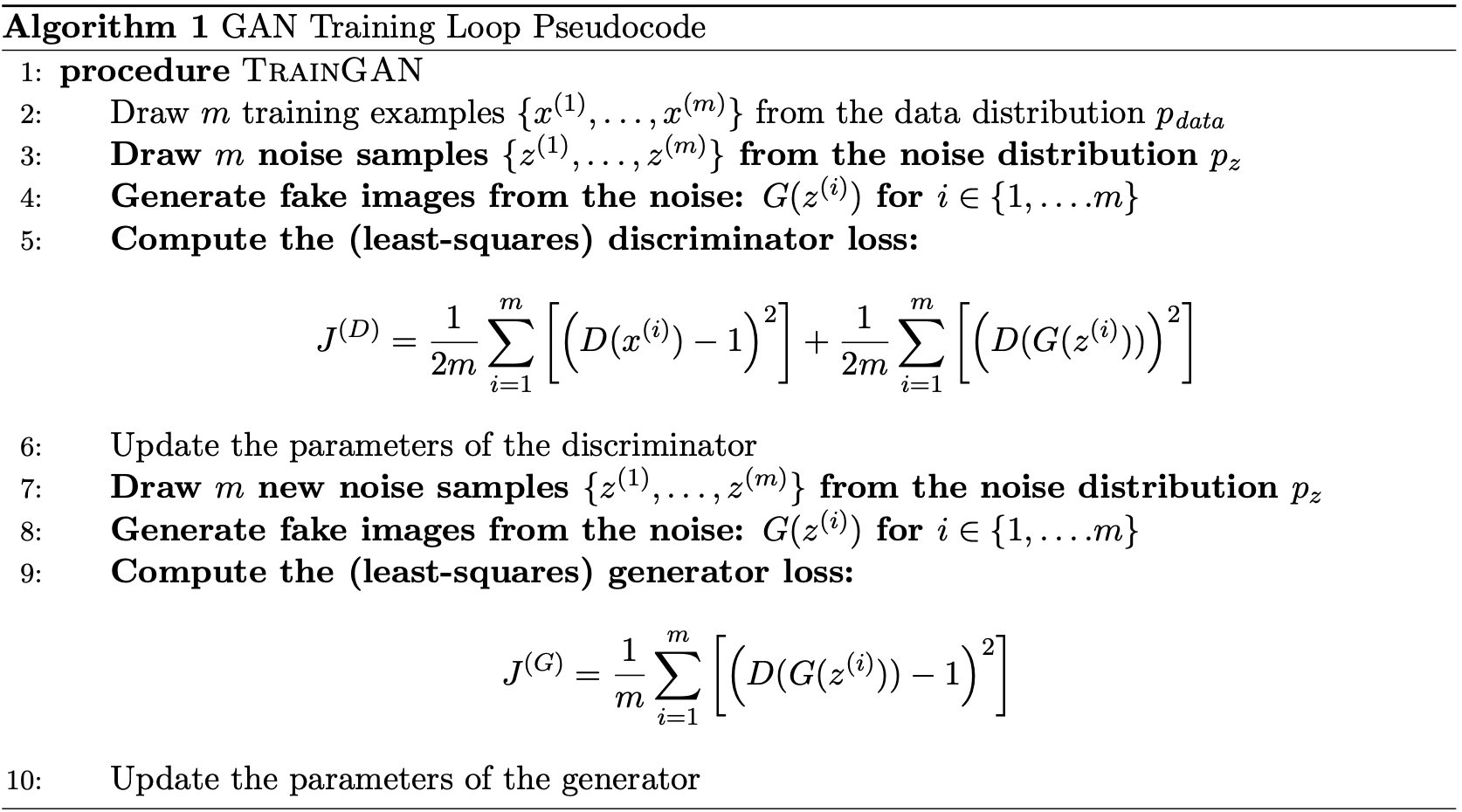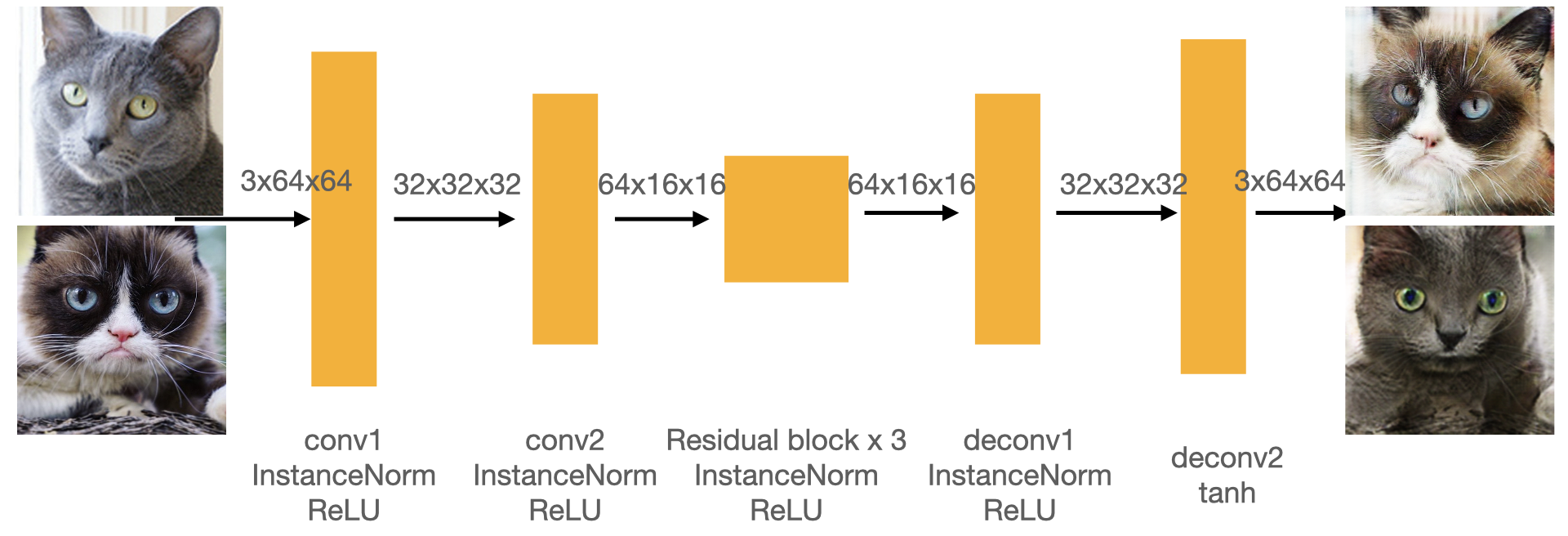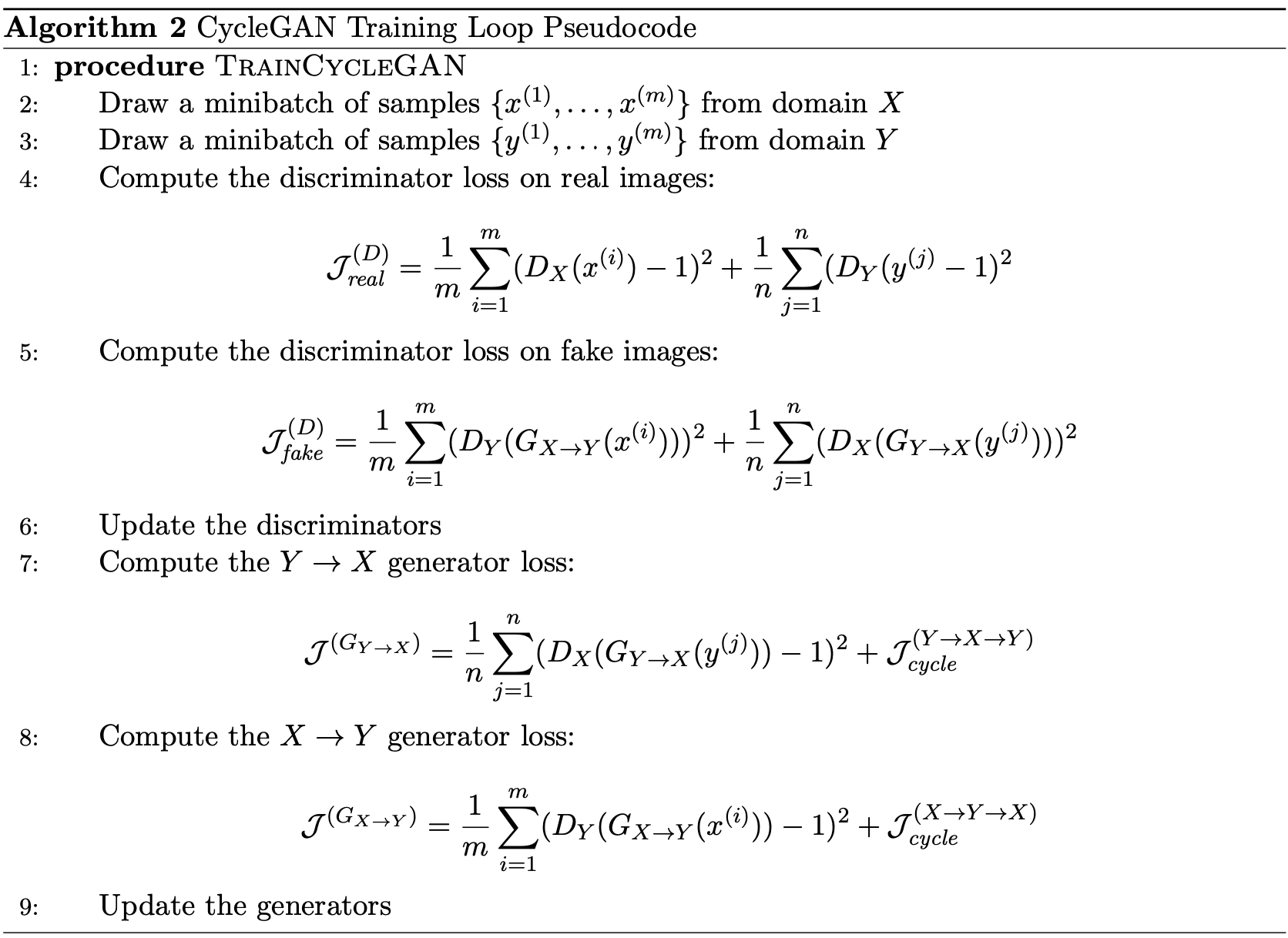Assignment #3 - When Cats meet GANs
Download: [attachment]
Late Policy
- You have free 5 late days.
- You can use late days for assignments. A late day extends the deadline 24 hours.
- Once you have used all 5 late days, the penalty is 10% for each additional late day.
(Results are generated by this work)
Introduction
In this assignment, you will get hands-on experience coding and training GANs. This assignment includes two parts: in the first part, we will implement a specific type of GAN designed to process images, called a Deep Convolutional GAN (DCGAN). We will train the DCGAN to generate grumpy cats from samples of random noise. In the second part, we will implement a more complex GAN architecture called CycleGAN for the task of image-to-image translation (described in more detail in Part 2). We will train the CycleGAN to convert between different types of two kinds of cats (Grumpy and Russian Blue). In both parts, you will gain experience implementing GANs by writing code for the generator, discriminator, and training loop, for each model. Code and data can be found here. Our slides on this assignment are here.
Part 1: Deep Convolutional GAN
For the first part of this assignment, we will implement a Deep Convolutional GAN (DCGAN). A DCGAN is simply a GAN that uses a convolutional neural network as the discriminator, and a network composed of transposed convolutions as the generator. To implement the DCGAN, we need to specify three things: 1) the generator, 2) the discriminator, and 3) the training procedure. We will develop each of these three components in the following subsections.
Implement Data Augmentation [10 points]
DCGAN will perform poorly without data augmentation on a small-sized dataset because the discriminator can easily overfit to a real dataset. To rescue, we need to add some data augmentation such as random crop and random horizontal flip.
You need to fill in deluxe version of data augmentation in data_loader.py. We provide some script for you to begin with. You need to compose them into a transform object which is passed to CustomDataset.
elif opts.data_aug == 'deluxe':
# add addtional data augmentation here
# load_size = int(1.1 * opts.image_size)
# osize = [load_size, load_size]
# transforms.Resize(osize, Image.BICUBIC)
# transforms.RandomCrop(opts.image_size)
# transforms.RandomHorizontalFlip()
pass
Implement the Discriminator of the DCGAN [10 points]
The discriminator in this DCGAN is a convolutional neural network with the following architecture:
- Padding: In each of the convolutional layers shown above, we downsample the spatial dimension of the input volume by a factor of 2. Given that we use kernel size K = 4 and stride S = 2, what should the padding be? Write your answer on your website, and show your work (e.g., the formula you used to derive the padding).
- Implementation: Implement this architecture by filling in the
__init__andforwardmethod of theDCDiscriminatorclass inmodels.py, shown below. Theconv_dimargument does not need to be changed unless you are using larger images, as it should specify the initial image size.def __init__(self, conv_dim=64): super(DCDiscriminator, self).__init__() ########################################### ## FILL THIS IN: CREATE ARCHITECTURE ## ########################################### # self.conv1 = conv(...) # self.conv2 = conv(...) # self.conv3 = conv(...) # self.conv4 = conv(...) def forward(self, z): """Generates an image given a sample of random noise. Input ----- z: BS x noise_size x 1 x 1 --> 16x100x1x1 Output ------ out: BS x channels x image_width x image_height """ ########################################### ## FILL THIS IN: FORWARD PASS ## ########################################### out = F.tanh(self.deconv5(out)) return out
Note: The function conv in models.py has an optional argument norm: if norm
is none, then conv simply returns a torch.nn.Conv2d layer; if norm is instance/batch, then conv returns a network block that consists of a Conv2d layer followed by a torch.nn.InstanceNorm2d/BatchNorm2d layer. Use the conv function in your implementation.
Generator [10 points]
Now, we will implement the generator of the DCGAN, which consists of a sequence of transpose convolutional layers that progressively upsample the input noise sample to generate a fake image. The generator in this DCGAN has the following architecture:
- Implementation: Implement this architecture by filling in the
__init__andforwardmethod of theDCGeneratorclass inmodels.py. Note: Use thedeconvfunction (analogous to theconvfunction used for the discriminator above) in your generator implementation.
Training Loop [10 points]
Next, you will implement the training loop for the DCGAN. A DCGAN is simply a GAN with a specific type of generator and discriminator; thus, we train it in exactly the same way as a standard GAN. The pseudo-code for the training procedure is shown below. The actual implementation is simpler than it may seem from the pseudo-code: this will give you practice in translating math to code.
- Implementation: Open up the file
vanilla_gan.pyand fill in the indicated parts of thetraining_loopfunction, starting at line 149, i.e., where it says# FILL THIS IN # 1. Compute the discriminator loss on real images # D_real_loss = ...There are 5 numbered bullets in the code to fill in for the discriminator and 3 bullets for the generator. Each of these can be done in a single line of code, although you will not lose marks for using multiple lines.
Experiment [10 points]
- Train the DCGAN with the command:
python vanilla_gan.py --num_epochs=100The script saves the output of the generator for a fixed noise sample every 200 iterations throughout training; this allows you to see how the generator improves over time. Include the following in your website:
- Screenshots of discriminator and generator training loss with both
--data_aug=basic/deluxe– 4 curves in total. Briefly explain what the curves should look like if GAN manages to train. - Set data augmentation to deluxe and then show one of the samples from early in training (e.g., iteration 200) and one of the samples from later in training, and give the iteration number for those samples. Briefly comment on the quality of the samples, and in what way they improve through training.
- Screenshots of discriminator and generator training loss with both
Part 2: CycleGAN
Now we are going to implement the CycleGAN architecture.
Data Augmentation
Remember to set the data augmentation to deluxe or feel free to add your additional data augmentation.
Generator [20 points]
The generator in the CycleGAN has layers that implement three stages of computation: 1) the first stage encodes the input via a series of convolutional layers that extract the image features; 2) the second stage then transforms the features by passing them through one or more residual blocks; and 3) the third stage decodes the transformed features using a series of transposed convolutional layers, to build an output image of the same size as the input.
The residual block used in the transformation stage consists of a convolutional layer, where the input is added to the output of the convolution. This is done so that the characteristics of the output image (e.g., the shapes of objects) do not differ too much from the input.
Implement the following generator architecture by completing the __init__ method of the CycleGenerator class in models.py.
def __init__(self, conv_dim=64, init_zero_weights=False):
super(CycleGenerator, self).__init__()
###########################################
# 1. Define the encoder part of the generator
# self.conv1 = ...
# self.conv2 = ...
# 2. Define the transformation part of the generator
# self.resnet_block = ...
# 3. Define the decoder part of the generator
# self.deconv1 = ...
# self.deconv2 = ...
To do this, you will need to use the conv and deconv functions, as well as the ResnetBlock class, all provided in models.py.
Note: There are two generators in the CycleGAN model, \(G_{X\to Y}\) and \(G_{Y\to X}\), but their implementations are identical. Thus, in the code, \(G_{X\to Y}\) and \(G_{Y\to X}\) are simply different instantiations of the same class.
CycleGAN Training Loop [20 points]
Finally, we will implement the CycleGAN training procedure, which is more involved than the procedure in Part 1.
Similarly to Part 1, this training loop is not as difficult to implement as it may seem. There
is a lot of symmetry in the training procedure, because all operations are done for both X → Y and Y → X directions. Complete the training_loop function in cycle_gan.py, starting from the following section:
# ============================================
# TRAIN THE DISCRIMINATORS
# ============================================
#########################################
## FILL THIS IN ##
#########################################
# Train with real images
d_optimizer.zero_grad()
# 1. Compute the discriminator losses on real images
# D_X_loss = ...
# D_Y_loss = ...
There are 5 bullet points in the code for training the discriminators, and 6 bullet points in total for training the generators. Due to the symmetry between domains, several parts of the code you fill in will be identical except for swapping X and Y ; this is normal and expected.
Cycle Consistency
The most interesting idea behind CycleGANs (and the one from which they get their name) is the idea of introducing a cycle consistency loss to constrain the model. The idea is that when we translate an image from domain \(X\) to domain \(Y\), and then translate the generated image back to domain \(X\), the result should look like the original image that we started with. The cycle consistency component of the loss is the mean squared error between the input images and their reconstructions obtained by passing through both generators in sequence (i.e., from domain \(X\) to \(Y\) viathe \(X \to Y\) generator, and then from domain \(Y\) back to \(X\) via the \(Y \to X\) generator). The cycle consistency loss for the \(Y \to X \to Y\) cycle is expressed as follows:
\[\frac{1}{m}\sum_{i=1}^m ||y^{(i)} - G_{X\to Y}(G_{Y\to X}(y^{(i)}))||_p\]The loss for the \(X \to Y \to X\) cycle is analogous. Here the traditional choice of \(p\) is 1 but you can try 2 as well if you vary your \(\lambda_{\text{cycle}}\).
Implement the cycle consistency loss by filling in the following section in cycle_gan.py. Note that there are two such sections, and their implementations are identical except for swapping \(X\) and \(Y\). You must implement both of them.
if opts.use_cycle_consistency_loss:
reconstructed_X = G_YtoX(fake_Y)
# 3. Compute the cycle consistency loss (the reconstruction loss)
# cycle_consistency_loss = ...
g_loss += cycle_consistency_loss
EDIT: Here, we gave an L2 formulation of the cycle consistency loss. However, you might benefit from using an L1 loss, as mentioned in the paper. If you go with L2, try a larger value of \(\lambda\). Both L1 and L2 loss will work. But they require different \(\lambda\).
CycleGAN Experiments [15 points]
Training the CycleGAN from scratch can be time-consuming if you do not have a GPU. In this part, you will train your models from scratch for just 600 iterations, to check the results.
- Train the CycleGAN without the cycle-consistency loss from scratch using the command:
python cycle_gan.pyThis runs for 600 iterations, and saves generated samples in the
output/cycleganfolder. In each sample, images from the source domain are shown with their translations to the right. Include in your website the samples from both generators at either iteration 400 or 600, e.g.,sample-000400-X-Y.pngandsample-000400-Y-X.png. 1. Train the CycleGAN with the cycle-consistency loss from scratch using the command:python cycle_gan.py --use_cycle_consistency_lossSimilarly, this runs for 600 iterations, and saves generated samples in the
output/cycleganfolder. Include in your website the samples from both generators at either iteration 400 or 600 as above. - If the previous looks reasonable, it is time to train longer time. Please show results after training 10000 iterations. Include the sampled output from your model.
- Do you notice a difference between the results with and without the cycle consistency loss? Write down your observations (positive or negative) in your website. Can you explain these results, i.e., why there is or isn’t a difference between the two?
What you need to submit
- Four code files:
models.py,vanilla_gan.py,data_loader.pyandcycle_gan.py. - A website submitted like the previous two assignments following the instructions here containing samples generated by your DCGAN and CycleGAN models, and your answers to the written questions as specified in the previous sections.
Bells & Whistles (Extra Points)
Max of 10 points from the bells and whistles.
- Get your GAN and/or CycleGAN to work on another dataset. We have included a dataset of different types of Pokemon (2pts) or you can find your own suitable one (3pts).
- Implement a patch discriminator (4pts) so that you can force local features to look realistic.
- Implement differentiable data augmentation for your generator (2pts) to make it more efficient with samples and force the discriminator not to memorize the dataset.
- Implement spectral normalization (2pts) on your GANs for stability.
- Do something cool with your model: Generate a GIF video or create a meme using your model (You can add your text manually.) OR design a new pokemon? Find directions in the latent space that can change the image in a meaningful way. (up to 4 pts)
- Train your GAN to generate higher-resolution images (up to 2 pts) They are available at this link.
- Find an improvement to the loss for DCGAN or CycleGAN and implement it (4 pts).
- Use a different type of generative model (like a VAE, PixelCNN, or flow-based model) for the same task (up to 8 pts)
- Your own ideas you have cleared with the TAs.
Further Resources
- Generative Adversarial Nets (Goodfellow et al., 2014)
- Generative Models Blog Post from OpenAI
- Unpaired image-to-image translation using cycle-consistent adversarial networks (Zhu et al., 2017)
- Official PyTorch Implementations of Pix2Pix and CycleGAN
Acknowledgement: The assignment is credit to Roger Grosse’s Toronto CSC 321 assignment 4.







